5 Contemporary African Artists to Know About Now
As the 1-54 Contemporary African Art Fair returns to London this month, we highlight the work of five of its artists
As the 1-54 Contemporary African Art Fair returns to London this month, we highlight the work of five of its artists
Named after the 54 countries that constitute the African continent, 1-54 is the first leading international art fair dedicated to contemporary art from Africa and its diaspora. “We do our utmost to highlight the diversity of contemporary African artists,” says Touria El Glaoui, 1-54’s founding director. “Our committee selects exhibitors for their intentions at the fair and in the wider art scene, with art chosen from galleries all over the world.”
The fair has held annual editions in London since 2013, New York since 2015, and Marrakech since 2018. This year, it will return to London’s Somerset House from October 8–10, showcasing the work of more than 110 artists, along with 1-54 Forum—a program of talks and film screenings, curated by Julia Grosse and Yvette Mutumba, founders of Contemporary And magazine. Health and security measures will be in place, including a one-way circuit through the fair; time-slot ticketing and VIP access system (to be pre-booked online); requiring visitors to wear face masks; and limited capacity, which will be controlled at all times.
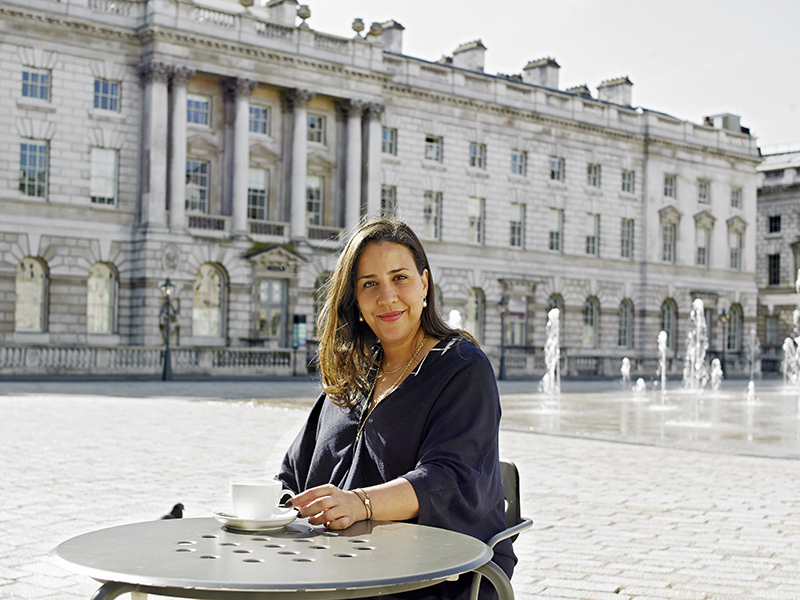
It will also be accompanied by the launch of 1-54 Online Powered by Christie’s, featuring digital previews of the exhibits along with exclusive virtual talks. “Christie’s online platform opens 1:54 up to a global audience,” says Dirk Boll, the president for Christie’s in Europe, Middle East, and Africa. “It provides digital viewing space where artists can be spotlighted.”
El Glaoui wants to ensure that this greater access to the fair’s artworks leads to long-lived results. “I encourage collectors to build relationships with the galleries and artists,” she says. “These relationships are important, not only for the collector and their reputation, but also for a sustainable art scene.” And her advice for choosing pieces to invest in is simple: “Ask yourself what moves you and pinpoint what you are drawn to by exposing yourself to a multitude of forms,” she says. Here we do just that, by turning the spotlight on five of the fair’s top artists.
Hailing from Maputo in Mozambique, Goncalo Mabunda aims to create sculptures that draw on the collective memory of his country. In artworks such as Throne of the Intellectuals, he uses objects of destruction recovered from the country’s civil war to represent this part of Mozambique’s past, while also conveying the transformative power of art and the country’s creativity.
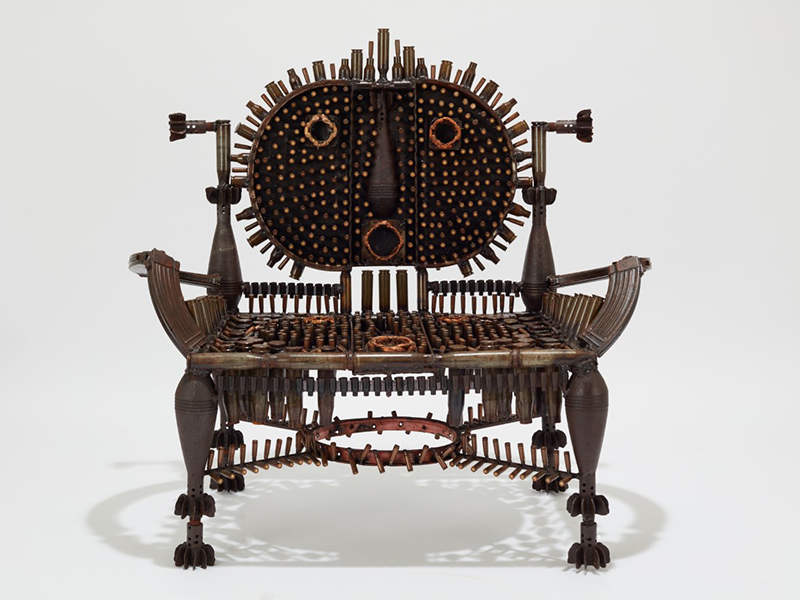
“What makes my artwork unique is that it represents the history of where I’m from, although in my point of view and from my experience,” Mabunda says. “For me, it’s important to participate in the art fair to show my work through such a significant platform. By being a part of this art fair, more people can get to know my country and its history.”
jackbellgallery.com
The Nigerian artist, Ranti Bam, who lives and works between Lagos and London, uses terracotta to explore notions of the female body and tension between fortitude and fragility. The artist’s Vessels series displays her combined use of hand building and throwing techniques along with the use of color, pattern, and texture to embellish each vessel’s surface.
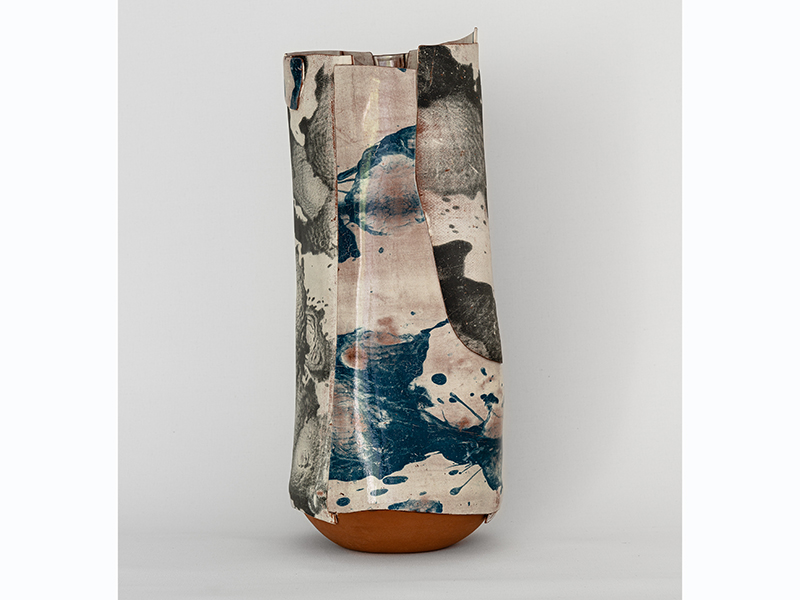
“Each work I make is borne from a unique set of circumstances,” she explains, “whether that’s the energy of the day or what I find inspiring in the moment.” When asked what she finds most rewarding about exhibiting at 1-54, she cites the “conversations that inspire and are inspired, with artworks, artists, and the public alike.”
50golborneart.com
Born in the United Kingdom, living in London, and representative of Africa’s diaspora, L.R. Vandy focuses on bringing found and made objects together to instill new meaning in them. The artist’s Hull series turns model boat hulls into masks, alluding to the transportation of migrants as commodities and transformation of identity.
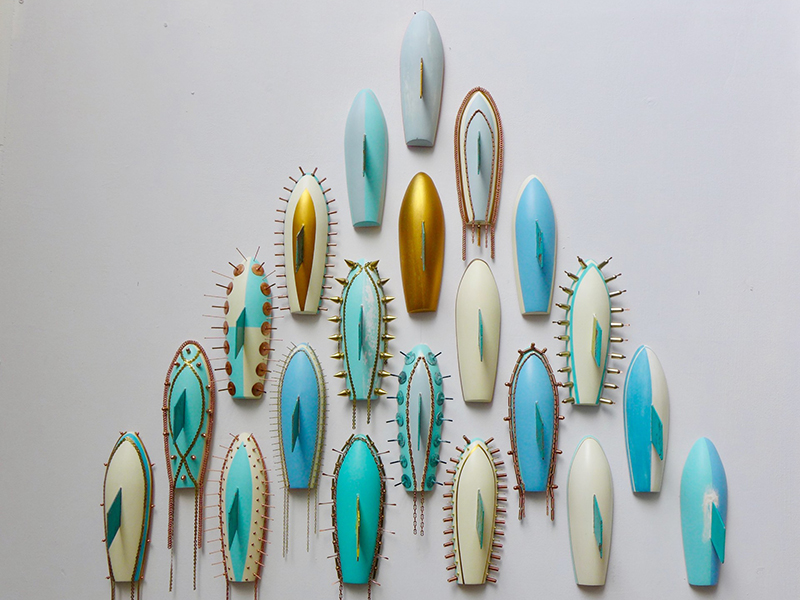
Vandy’s Flotilla installations are a continuation of this series. “The two Flotilla installations at 1-54 further develop this theme of people as commodities,” she says. “Exhibiting at 1-54 enables me to reach out to an audience who are interested in the work of artists of the diaspora. This year, with the link to Christie’s, there is an opportunity to showcase my work to another group of people who will respond differently to what’s being exhibited.”
octobergallery.co.uk
The desire to look simultaneously inwards and outwards is a key factor in Tunisian artist Thameur Mejri’s work. The Nabeul-based artist identifies with the idea of shedding light on our surroundings through the philosophy of deconstruction. In his work, Mejri reduces the body to its elements to represent regained control.
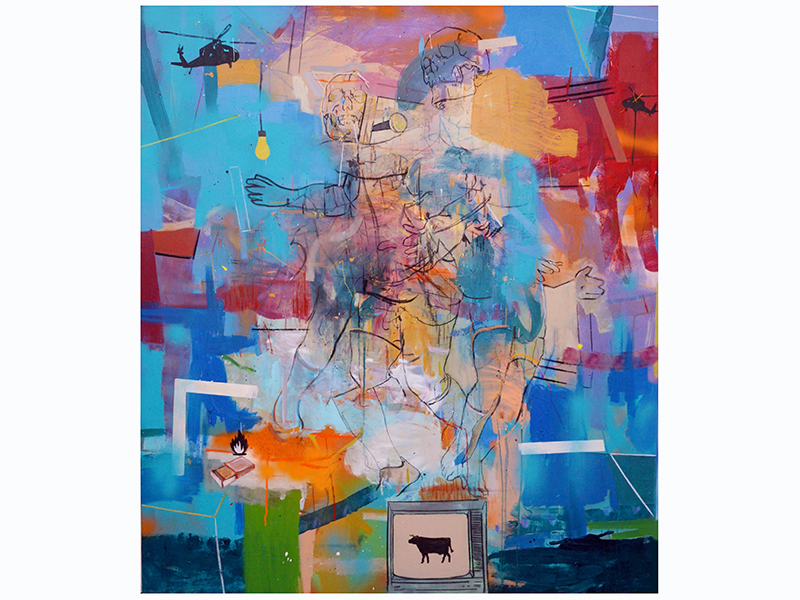
“What makes the artworks I’m exhibiting at 1-54 unique is their importance in the stage of my career,” he says. “This series of paintings is the one that initiated my current artistic approach. It represents a turning point, with themes like dogma deconstruction, which I feel are timely.”
Through 1-54, Mejri seeks to heighten his work’s visibility. “Having the ability to showcase my work, from one of the lesser represented countries in the contemporary African art scene, allows me to share my practice as part of a larger cultural identity of Africa.”
montaguecontemporary.com
Born in Oshogbo, Nigeria, and now based in North Carolina, Wole Lagunju practices the art form known as Onaism. By appropriating Western cultural artefacts and combining them with the cultural artefacts of the Yoruba people, the artist challenges viewers to consider how we look at culture through a Western lens.
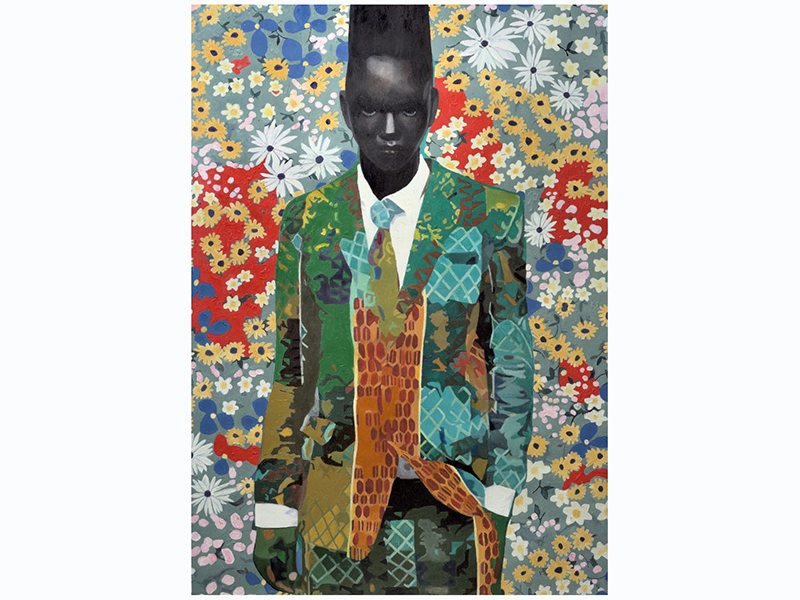
“Ona is a Yoruba word which means ornamentation. This is a leitmotif of my practice,” Lagunju explains. “In my work, life is viewed as a tapestry of different hues, which I interpret through patterned chromatic association. I establish an interpretive structure for commentary on life by drawing from Yoruba philosophy. I believe that by linking the past with the present, Ona artists are stylistic innovators of Yoruba beliefs.” Lagunju sees his part in 1-54 as a way of placing the Yoruba Ona art discourse within the global discussion on contemporary African art.
montaguecontemporary.com
Banner image: Psychedelia by Wole Lagunju